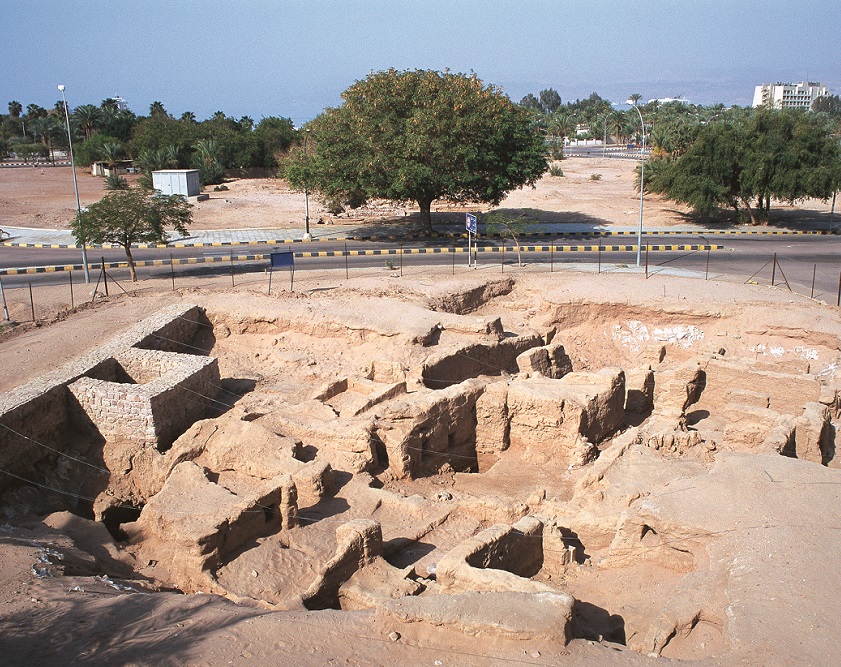
During the Roman era, and specifically since the second half of the third generation, Ayla became an episcopal seat and a major center, and its bishops participated in many ecclesiastical councils, and this is evidence of the existence of an ancient Christian community in the city of Ayla. Experts from the University of North Carolina recently found a church believed to be the oldest in the world. It is built of mud bricks on rock foundations. They suggested that the church was built in the late third or early fourth century AD. A tomb was found adjacent to the church dating back to the same era as the church.

Aqaba is located at the southern end of Jordan overlooking the Red Sea, and it was considered a center of great importance for the convoys coming from the sea and land, and therefore had great commercial importance, as it was the link between Syria and Palestine on the one hand, and between the traders of the Arabian Peninsula and the countries of the Far East On the other hand, it was always considered the coveted king of Jerusalem since the time of Solomon and the kings of the Edomites and Nabateans. Currently, Aqaba is regaining its importance as the only outlet on the Red Sea.
When the Romans destroyed and subjugated the kingdom of the Nabateans, they put the tenth battalion (the phartensis battalion) in it. During the reign of Trajan, they built a land road that connected Ayla to Bosra al-Sham, the capital of the Arab province. Since the second part of the third generation, Ayla has become an episcopal seat and a major center. Its bishop, Peter, attended the Nicaea Council (325 AD), its bishop Prilus, the Chalcedonian Council (451 AD), and another bishop, also named Peter, the Council of Jerusalem (536 AD).
Papyrus scrolls were found at the site of Nisana in the Negev, including a letter from the first half of the sixth generation from Moses, bishop of Ayla, to a man named Victor ben Sergius. And it read: "From Moses, by the grace of God, Metropolitan of Ayla City, to Victor, son of Sergius. I send you the offering that this Bedouin brings to you as a donation for the church of Saint Sergius in Nisana, and the church of Saint Sergius in Alusa, and here I am, Moses son of Sergius, the bishop. ".
It is noteworthy that the architect of the Church of St. Catherine in Sinai was one of the sons of the Church of Ayla. On one of the basilica’s wooden bridges, he wrote in Greek: “Lord, inhabitant of this place, save and have mercy on the engineer from Ayla, your servant Stephen, son of Martinos, son of Nona, grant your eternal rest to the souls of his sons Georgios, Sergius and Theodora.”
The Roman city of Ayla was discovered by a team of researchers from the University of North Carolina, led by the late archaeologist Professor Thomas Parker. After research and excavations, remains of the city were found, dating back to the first century BC. The discovered materials included parts of the walls that surrounded the city and countless pieces of pottery, coins, and others. The ruins of the city of Ayla, which was mentioned in the First Book of Kings of the Bible, were discovered.
In 1998, scholars also found a church that dates back to the late third or early fourth century AD (the first phase of its construction was dated to the years 293-303 AD), and it was built of mud bricks on rocky foundations. This church is considered the oldest Christian church in the world that was built for this purpose, that is, it is the oldest Christian building dedicated to worship, since its predecessors were buildings converted from other uses or civilizations, making it slightly older than the Church of the Holy Sepulcher in Jerusalem and the Church of the Nativity in Bethlehem, which are both They date back to the fourth century AD (between 320 AD). Thus, the prevailing perception among historians that the oldest churches in Jordan date back to the late fourth century AD has been refuted.
History does not mention how Ayla ended and when Aqaba was born. Earthquakes may be the main cause, as is the case for many cities, and there is certainly a kinship, complementarity and communication between Ayla and Aqaba, and the remains of the church named after Saints Theodorus and Longinus indicate this.